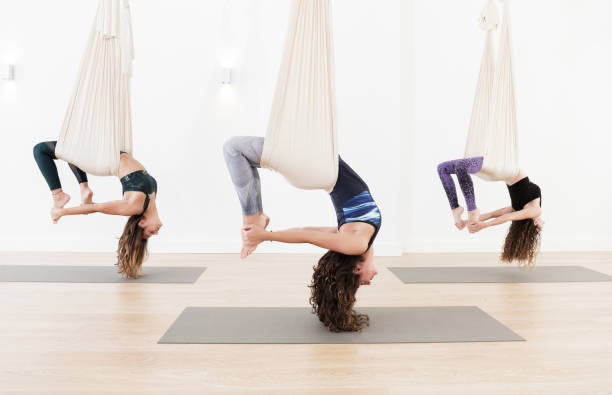Decoding the Health Benefits of Aerial Yoga: A New Dimension to Fitness
Is it a bird? Is it a plane? No, it's you, suspended in mid-air, finding balance and strength in a unique form of yoga that's been soaring in popularity. Welcome to the exciting world of aerial yoga - a fitness phenomenon that's as fun as it is beneficial.

Aerial yoga, also known as anti-gravity yoga, presents a unique twist on the traditional practice by incorporating the use of a hammock or silk swing. But this isn’t just a novelty exercise, it’s a comprehensive workout that marries elements of yoga, Pilates, dance, and aerial acrobatics. But what makes aerial yoga so beneficial, and how does it stack up against its earth-bound counterpart?
A Brief History of Aerial Yoga
Aerial yoga is a relatively new practice, born out of an innovative fusion of traditional yoga and modern acrobatics. Its roots trace back to the late 1990s and early 2000s, when aerialists and yogis began to experiment with the potential of combining yoga with aerial arts. This innovative approach gained traction and evolved into a full-blown fitness trend over the past two decades.
The Health Benefits of Aerial Yoga
Thanks to its unique combination of disciplines, aerial yoga offers a wealth of health benefits. Here are just a few backed by scientific research:
- Improved Flexibility: The use of a hammock allows for a greater range of motion, helping to deepen stretches and improve flexibility over time.
- Enhanced Core Strength: The instability of the hammock challenges your core muscles, helping to build strength and stability.
- Improved Cardiovascular Health: Aerial yoga is a full-body workout that can get your heart pumping, potentially improving cardiovascular health.
- Reduced Stress and Anxiety: Just like traditional yoga, aerial yoga can help to reduce stress and anxiety through mindful movements and deep breathing.
The Science Behind Aerial Yoga
While there’s plenty of anecdotal evidence supporting the benefits of aerial yoga, scientific research is still in its early stages. However, preliminary studies show promising results. A 2017 study published in the International Journal of Yoga found that a 12-week aerial yoga program significantly improved cardiovascular fitness, flexibility, and body composition in a group of healthy adults.
Aerial Yoga: The Challenges and Considerations
Despite its many benefits, aerial yoga isn’t without its challenges. It requires a higher level of strength and flexibility than traditional yoga, and there’s also a greater risk of injury if not performed correctly. It’s crucial to practice with a qualified instructor to ensure proper form and safety.
Quick Facts: Aerial Yoga
- The use of a hammock in aerial yoga can help support the body in advanced poses, making them more accessible to beginners.
- Aerial yoga can help improve posture by decompressing the spine and strengthening the muscles that support it.
- Some people find aerial yoga more enjoyable than traditional yoga, which could potentially lead to improved adherence to a regular exercise routine.
In conclusion, aerial yoga offers a fresh and exciting approach to fitness. It provides a unique blend of physical benefits, from improved flexibility and strength to enhanced cardiovascular health, while also promoting mental well-being. While it’s not without its challenges, with the right instruction, this gravity-defying workout can be a fun and beneficial addition to your wellness routine. So, why not spread your wings and give aerial yoga a try? After all, the sky’s the limit when it comes to your health and well-being.




